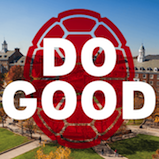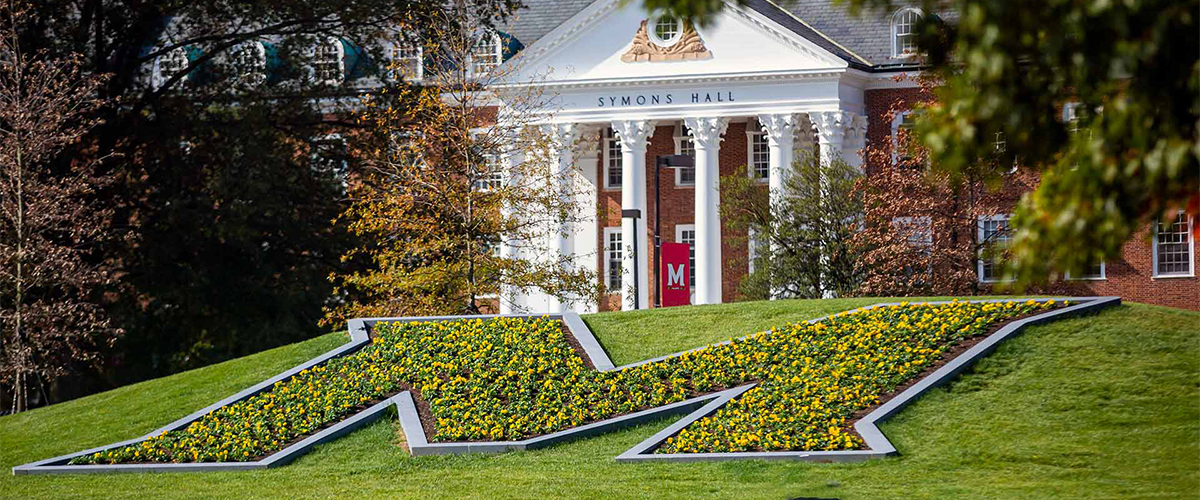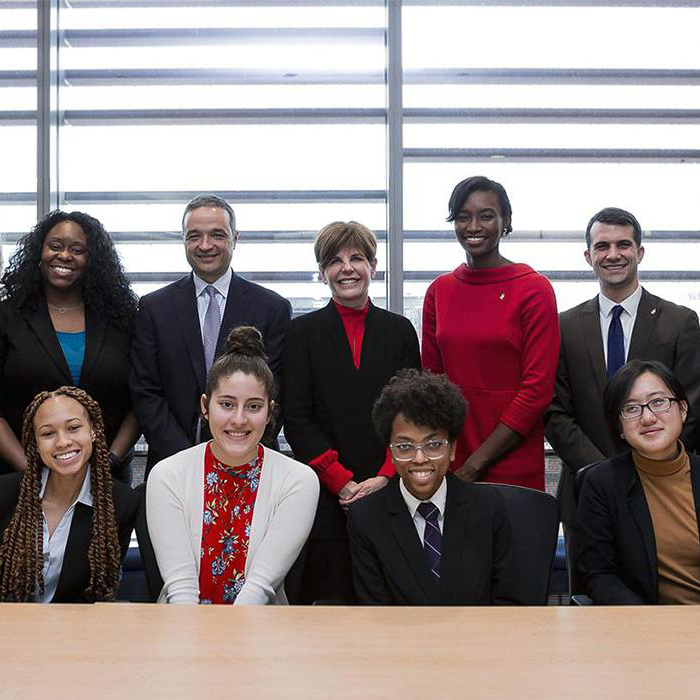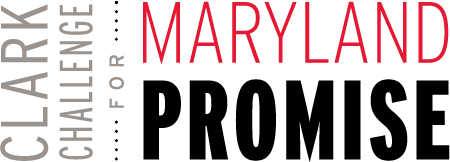UMD COVID-19 Physical Distancing Guidance for Facilities
←Return to the Fall 2020 Reopening Plan
—
UPDATED JULY 15, 2020
Background
- Physical distancing (specifically, staying at least 6 feet away from others when you must go into a shared space)
- Frequently washing hands or use alcohol-based (at least 60% alcohol) hand sanitizer when soap and water are not available
- Wearing a cloth face coverings to reduce distribution of droplets potentially containing the virus (source control)
- Avoiding touching eyes, nose, and mouth
- Staying home when sick
- Cleaning and disinfecting frequently touched objects and surfaces
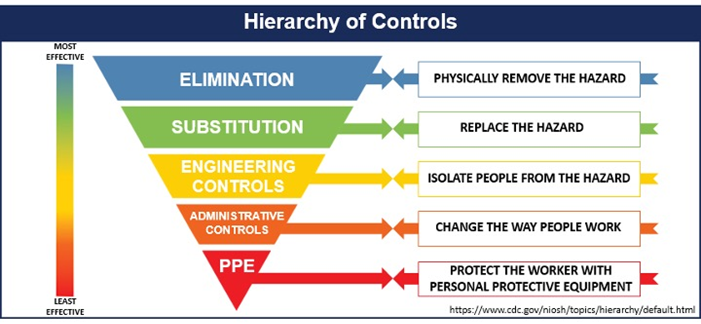
The University’s Health, Safety and Risk Management Task Force advocates the use of the hierarchy of controls (above) for hazard prevention and control. Engineering and administrative controls for physical distancing are effective methods of risk mitigation. Increasing the physical distance between individuals and/or their work areas and placing barriers where needed can reduce droplet spread.
General Guidance
The University has developed multiple strategies to resist the spread of COVD-19. Administrative, academic and/or programmatic units are to develop procedures and processes, and furniture placement or modifications to encourage and facilitate physical distancing in accordance with this guidance document. The administrative and engineering controls strategies include:
Administrative, academic and/or programmatic units are responsible to put in place procedures to change the ways people work, teach and study. Changes include:
- Reducing the need for face to face interactions by process changes such as electronic signature, contactless delivery and pickup, and use of appointments and reservations.
- Informing individuals of institutional training opportunities about the modes of transmission of the virus and precautions required to reduce the transmission of COVID-19, including physical distancing measures and their own department specific procedures.
- Use signage to guide, inform and educate. Consistent university signage is available from the FM Signs and Graphics unit here.
Reducing the number of faculty, staff and students on campus facilitates the maintenance of physical distancing between individuals. The need to reduce the number of people on campus to support physical distancing requirements will be ongoing. Procedural changes can include:
Staffing options:
- Remote work
- Alternating days
- Staggered reporting/departing, breaks and shifts
- Postponing non-essential meetings and events or holding them virtually
More detailed information on decreasing a physical presence on campus for faculty and staff can be found at:
University Human Resources | » Safety Practices and Requirements for Working on Campus
Reducing the number of faculty, staff and students on campus will increase the opportunity to maintain physical distancing. The University is instituting the following protocols to facilitate physical distancing.
Public Areas
Public areas are common indoor spaces that are frequented by many people, such as classrooms, lobbies and large gathering places. A careful review of public spaces will be done by facilities professionals and plans will be developed to maintain prescribed distances. (See resources section) The following changes may be implemented where practical to keep at least six feet of distance between people:
- Dedicated building entry and exit points
- Modified pedestrian traffic patterns in hallways and other communal spaces
- Limiting the number of persons in elevators and entryways; encouraging the use of stairs instead of elevators where feasible
- In some instances the use of physical barriers will be implemented to protect people who must come in close contact with others
- Installation of signage to provide cues for distancing
- Limiting large gatherings
Any change to the entry, exit or traffic pattern of a facility must be reviewed by the Fire Marshal to ensure compliance with applicable codes.
Bathrooms
Any modifications to restrooms and bathrooms must be balanced with other applicable public health codes, American with Disabilities Act and privacy and must be reviewed by a facilities design professional.
General Workplace
- Workspaces will be arranged to allow for physical distancing measures as feasible.
- Departments should designate and post the maximum number of occupants that may be in common areas , remove or rearrange chairs and tables, or add visual cues in meeting rooms to support physical distancing practices between attendees. While on campus, employees are encouraged to communicate with colleagues and supervisors as needed by email, instant message, telephone or other available technology rather than face-to-face.
- Organize seats in reception areas to maintain at least six feet between seats.
- Procedures will be developed to address situations when physical distance is not possible in order to limit the time spent in close contact. Face coverings are required to be worn when inside buildings and outdoors when near others. In some cases, barriers may provide an alternative. The need for PPE must be based on a hazard assessment by Safety Professionals in accordance with OSHA 3990 exposure risk levels for COVID-19.
- Meeting in groups is discouraged when possible, meetings should be held using available collaboration tools (e.g. Zoom, WebEx, ). Keep Working @ UMD- IT Support - UMD
- Visitors should be limited except for required essential services. A mechanism for recording visits will facilitate contact tracing should it become necessary. UMD Campus Affiliate and Visitor Guidelines
- In-person meetings should be limited to settings where individuals can maintain six feet of separation by use of occupancy limits and space modifications.
- Use staggered timing, occupancy limits and alternative locations in areas where people may gather for breaks or meals because face coverings will be removed when eating or drinking.
- Encourage the use of outdoor spaces when appropriate.
Physical Distancing Resources
Circulation and Physical Distancing
Code Compliance
Safety Professionals
